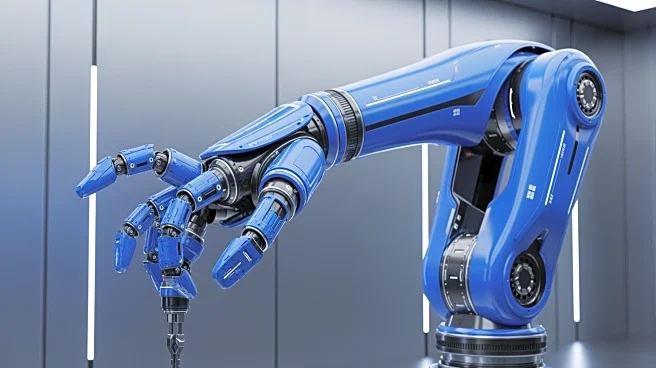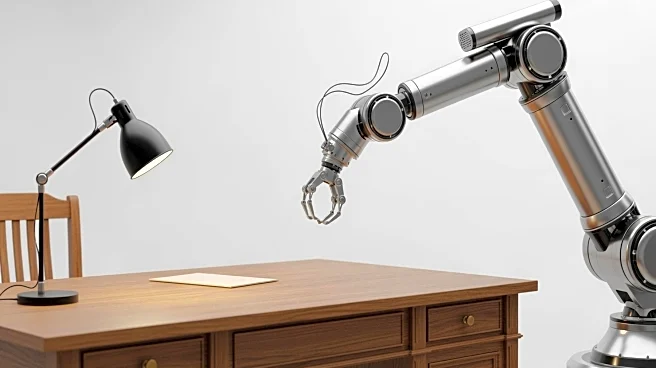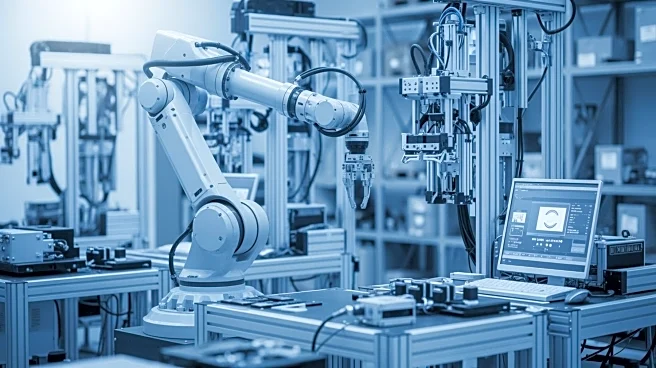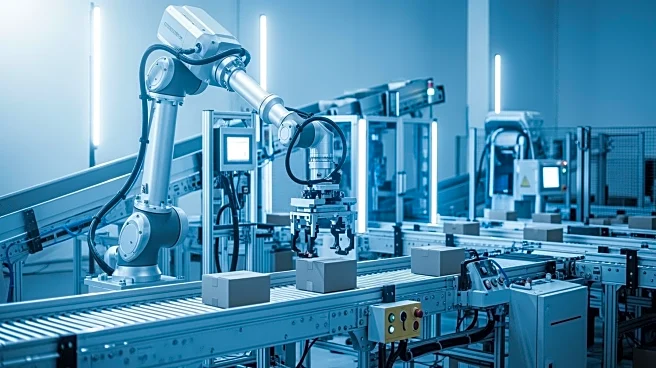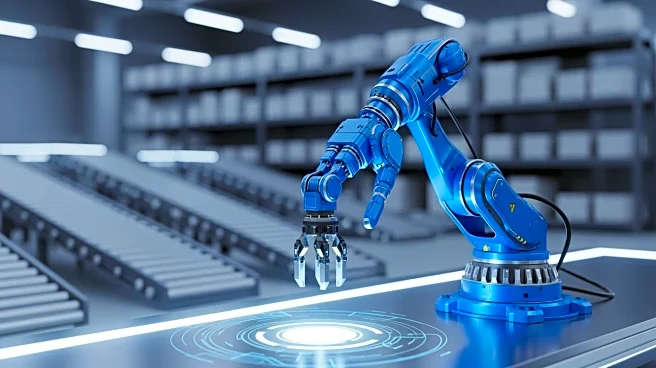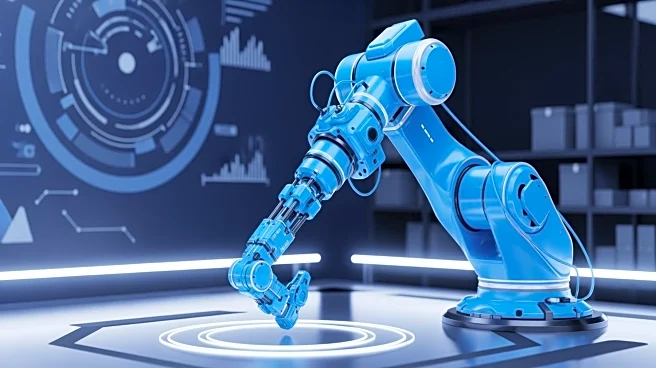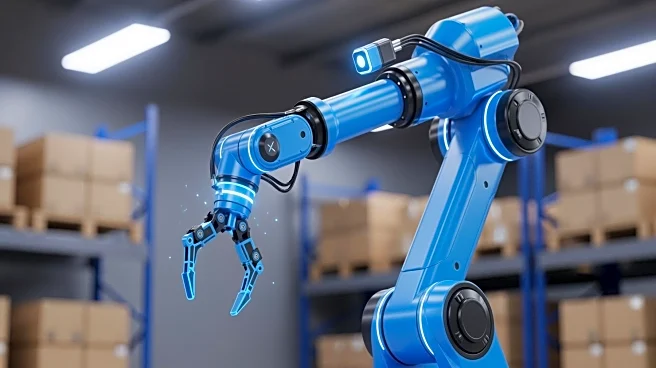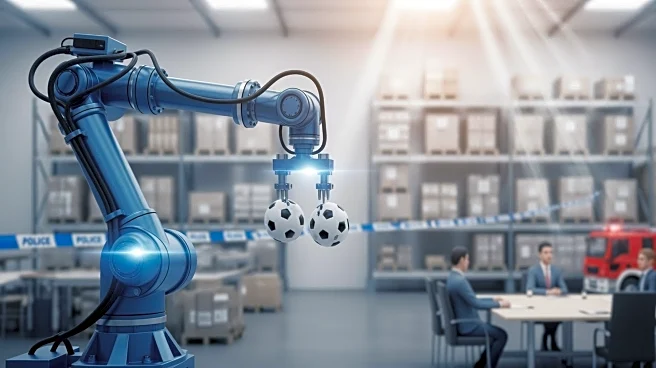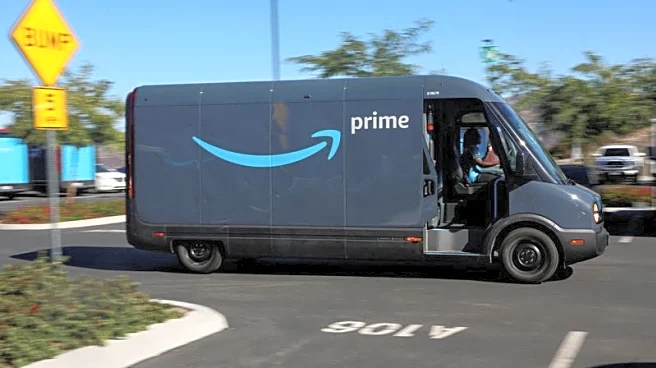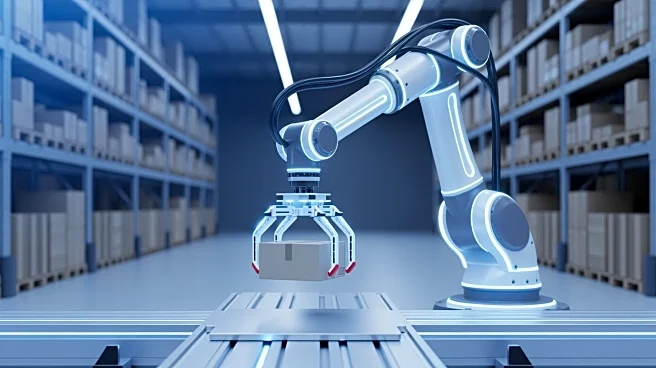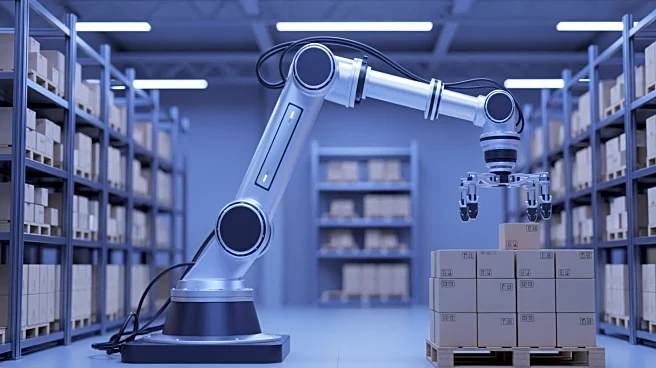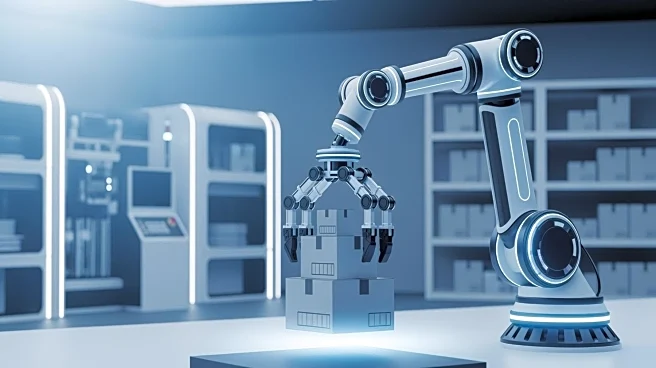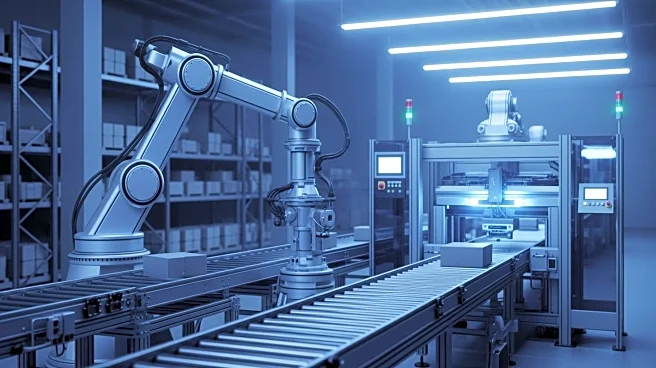What's Happening?
Amazon has introduced Blue Jay, a new robotic system designed to improve efficiency in its fulfillment centers. Blue Jay coordinates multiple arms to perform picking, stowing, and consolidating tasks simultaneously, effectively combining three assembly
lines into one. This innovation aims to support front-line employees by reducing physical demands and allowing them to focus on higher-value tasks. The development of Blue Jay was expedited through advancements in AI and digital twins, reducing the typical development time from years to just over a year. The robot is currently being tested in South Carolina, with plans to enhance operations and customer service.
Why It's Important?
The introduction of Blue Jay represents a significant advancement in warehouse automation, potentially transforming the logistics industry. By streamlining operations, Amazon can increase efficiency, reduce costs, and improve delivery times, benefiting both the company and its customers. The technology also supports Amazon's workforce by shifting employees from repetitive tasks to roles that require problem-solving and quality control, enhancing job satisfaction and safety. As Amazon continues to expand its robotic fleet, the company sets a precedent for other businesses to adopt similar technologies, potentially leading to widespread changes in warehouse operations and labor dynamics.
What's Next?
Amazon plans to continue testing Blue Jay in South Carolina, with potential expansion to other fulfillment centers if successful. The company may further integrate AI and robotics into its operations, exploring new ways to enhance efficiency and employee experience. As Blue Jay and similar technologies become more prevalent, Amazon could face challenges related to workforce adaptation and training. The logistics industry may see increased competition as other companies seek to implement similar innovations. Additionally, regulatory bodies may need to address the implications of automation on employment and industry standards.
Beyond the Headlines
The deployment of Blue Jay raises questions about the future of work and the role of automation in society. While the technology offers benefits in terms of efficiency and safety, it also prompts discussions about job displacement and the need for workforce retraining. The ethical considerations of AI and robotics in the workplace may lead to debates about the balance between technological advancement and human employment. Long-term, the integration of such technologies could influence cultural perceptions of work and productivity, shaping the future of labor in the logistics sector.
